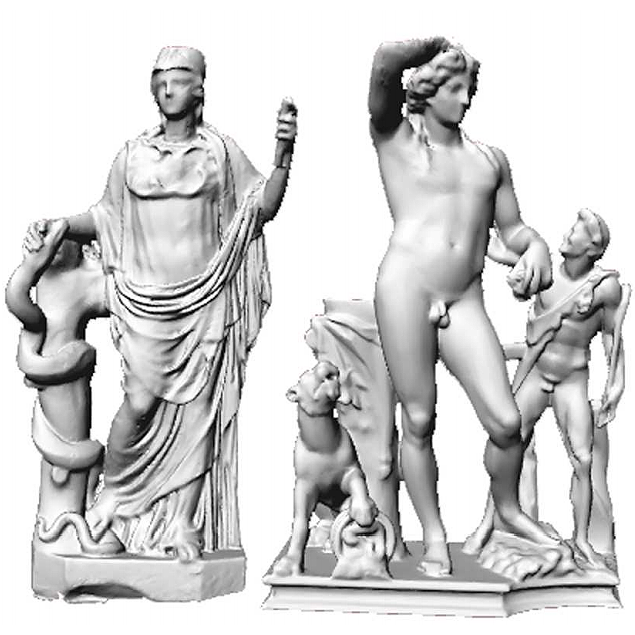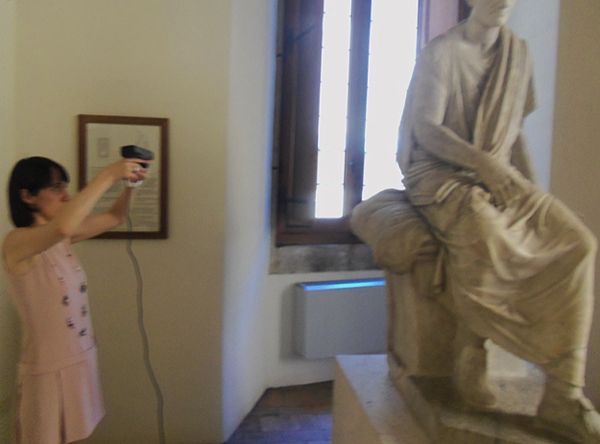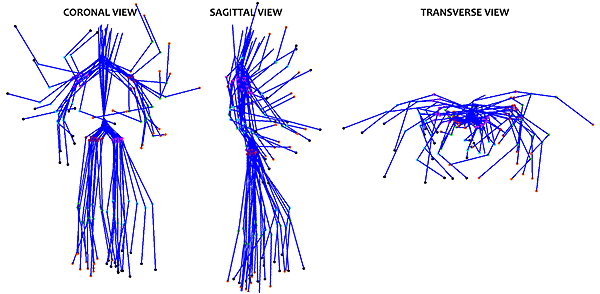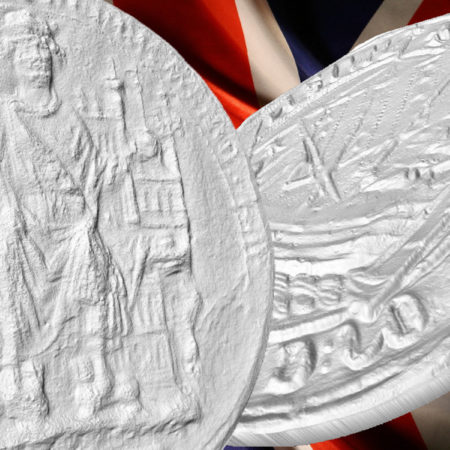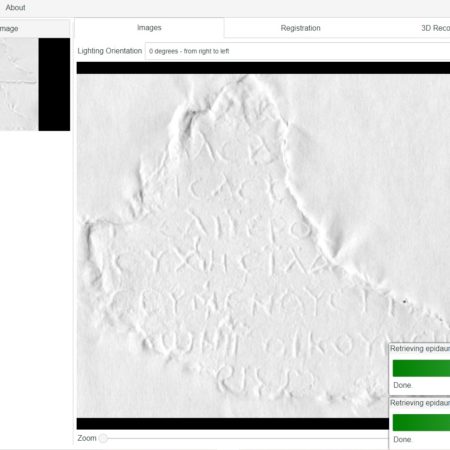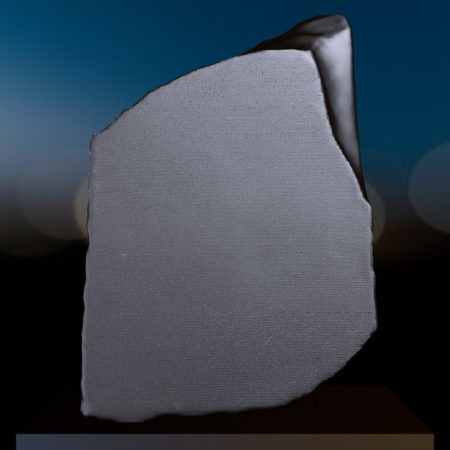Digitization of Sculptures from the Museo Nazionale Romano
February 20, 2015.
How can you search for a statue in a database without using any keywords or textual metadata?
The DEA group in collaboration with the museum of Palazzo Altemps in Rome, Italy digitized in 3D statues from three of the collections housed in the museum: Boncompagni Ludovisi collection, Mattei collection, and Altemps collection. The digitization was performed using low-cost infrared depth sensors for iPad and XBOX by manually moving the sensor around the sculptures in order to capture their tridimensional form.
Description
GAINESVILLE, Fla.
February 20, 2015.
How can you search for a statue in a database without using any keywords or textual metadata?
The DEA group in collaboration with the museum of Palazzo Altemps in Rome, Italy1 digitized in 3D statues from three of the collections housed in the museum: Boncompagni Ludovisi collection, Mattei collection, and Altemps collection. The digitization was performed using low-cost infrared depth sensors for iPad and XBOX by manually moving the sensor around the sculptures in order to capture their tridimensional form.

Picture from our digitization session in Palazzo Altemps. Each session lasted for about 180 seconds and captured several millions of polygons on the surface of each statue.

This figure shows selected samples from our dataset of 3D digitized statues.

Visualization of the estimated skeletons of statues in our dataset shown from three different perspectives. Quantitative posture analysis can be applied to such dataset in order to assist scholars in studying the variations between sculptures from different cultures, eras, and schools.
Above you can find an example of an embedded 3D sculpture from the digitized collection. Use your mouse or touch pad to interact with the exhibit. You can rotate, zoom, relight and view in full screen information about this statue.
To learn more on how to use our open-access tools to digitize, analyze, and disseminate your own collection feel free to contact us or visit the web-site of the Digital Epigraphy and Archaeology project.
The DEA editorial team
References:
1. Museo Nazionale Romano di Palazzo Altemps, archeoroma.beniculturali.it/en/museums/national-roman-museum-palazzo-altemps.
2. A. Barmpoutis, E. Bozia, D. Fortuna, “Interactive 3D digitization, retrieval, and analysis of ancient sculptures, using infrared depth sensors for mobile devices “, 17th International Conference on Human-Computer Interaction, Los Angeles, August 2-7,
2015. PDF
Funded in part by the:
A. Rothman Fellowship in the Humanities from the Center for the Humanities and the Public Sphere at the University of Florida
B. and the Research Incentive Award from the College of the Arts at the University of Florida.
The images from our published article2 are shown with permission from the Italian Ministry of heritage, cultural activities and tourism. Su concessione del Ministero dei beni e delle attività culturali e del turismo – Soprintendenza Speciale per il Colosseo, il Museo Nazionale Romano e l’area archeologica di Roma.
